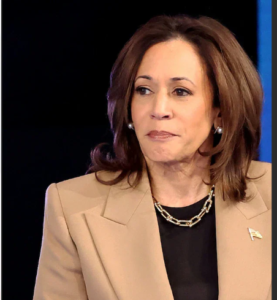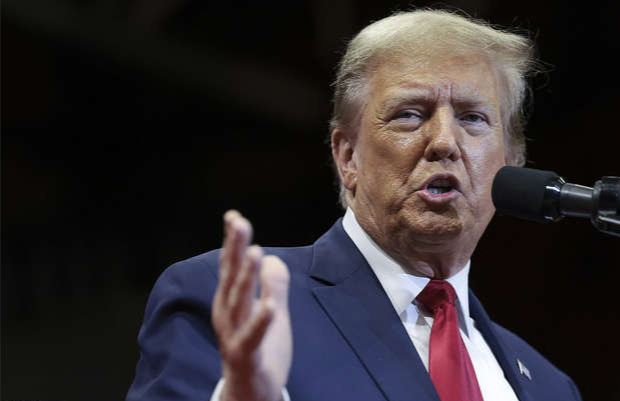Ardain Isma
CSMS Magazine
While it was anticipated that Trump could win, few expected the sweeping nature of his victory. As results poured in, consistently favoring Trump—though his initial wins came from expected states—it became evident that momentum was on his side. I held onto a glimmer of hope, as none of the battleground states had been called. At 2:24 a.m., just as I was drifting off to sleep, my wife shook me awake, and I sprang from bed.
“Donald Trump is about to go on stage to claim victory,” she said, her voice trembling with emotion. A lifelong progressive and feminist, Harris’s loss struck her deeply. I turned to the television screen; there was Trump in a Florida ballroom, surrounded by advisers, party leaders, family, and friends, claiming victory before most major news organizations had officially called the race.
No one contested his claim; by that time, it was clear that voters had propelled him back to power. Looking out at a sea of supporters in red MAGA hats, Trump reveled in the moment. “We’ve achieved the most incredible political feat,” Trump declared. “America has given us an unprecedented and powerful mandate.”
How Did He Do It?
The story of how 78-year-old Trump secured re-election will be studied for years to come, with key decisions already standing out as pivotal. His campaign focused on appealing to male voters while maintaining strong support from the women who had backed him previously. He doubled down on core issues like the economy and immigration, using pointed rhetoric on deportation without providing detailed plans for execution. Most importantly, his relentless campaign tapped into the frustrations of disillusioned voters, magnifying cultural divides and leveraging tribal politics—strategies that had long defined his political approach.
Trump, who left office in 2021 under a cloud of controversy after inciting a mob to storm the U.S. Capitol, staged an extraordinary comeback just three years later. Despite facing a 34-count felony conviction and multiple other indictments, he outmaneuvered his GOP rivals, pressured President Joe Biden to step aside, and defeated Vice President Kamala Harris in a decisive victory that defied most expectations. In achieving this win, Trump became the second president in U.S. history, after Grover Cleveland in 1893, to return to the presidency after losing re-election.
The Magnitude of His Victory
Trump’s win was remarkable. He carried North Carolina, reclaimed Georgia, and shattered the Blue Wall. As Time Magazine noted, Trump’s campaign not only met but exceeded its goals of turning out male voters and retaining female support. Exit polls indicated that Trump gained significant traction among Latino men in key battleground states, with his support in Pennsylvania increasing from 27% to 42%. Nationally, his support among Latino men surged from 36% to 54%. He also strengthened his base among voters without a college degree, made gains with Black voters in Pennsylvania and Wisconsin, and maintained steady support among white women—surprising Democrats who anticipated a backlash after the Dobbs decision. Even among first-time voters, Trump’s support rose from 32% in the previous election to a commanding 54% majority.
The Democrats’ Strategic Missteps
Kamala Harris stepped into the presidential race after Biden, under pressure, withdrew following a weak debate performance against Trump. However, Harris’s campaign underestimated Trump’s resilience. The campaign, perceived as elitist, struggled to connect with average voters.
Heading into election day, Harris’s campaign seemed to have momentum. Opinion polls indicated a tight race, with some showing her leading. She focused on Trump’s character, legal challenges, and the chaos of his first term, including the January 6 Capitol riot, hoping to dissuade voters from revisiting the 2017-2021 era. Her campaign heavily featured the rollback of abortion rights after the Supreme Court’s overturning of Roe v. Wade, vowing to restore them.
 Still, Harris failed to convince many voters. Her close association with the Biden administration and contentious issues such as the border crisis, Ukraine, and Gaza took their toll. On Ukraine, voters were frustrated by substantial financial investments in a conflict seen as distant from American priorities, with many believing those funds could have been better spent on domestic needs like education and healthcare. Rather than take a nuanced stance, Harris doubled down, pledging to ensure a Ukrainian victory despite experts advocating for peace negotiations as the most viable path forward.
Still, Harris failed to convince many voters. Her close association with the Biden administration and contentious issues such as the border crisis, Ukraine, and Gaza took their toll. On Ukraine, voters were frustrated by substantial financial investments in a conflict seen as distant from American priorities, with many believing those funds could have been better spent on domestic needs like education and healthcare. Rather than take a nuanced stance, Harris doubled down, pledging to ensure a Ukrainian victory despite experts advocating for peace negotiations as the most viable path forward.
Regarding Gaza, voters perceived a stark inconsistency. The Biden administration publicly called for a ceasefire to ease the suffering of millions of Palestinians living in dire conditions but continued to supply Israel with arms and billions in aid to wage war against Hamas. This conflict, which had already claimed thousands of civilian lives, cast a shadow over Harris’s campaign as she did not distance herself from these policies, which many viewed as inhumane.
Relying on Celebrity Endorsements
Instead of focusing on reassuring disenfranchised voters, Harris’s campaign leaned on alternative strategies, including celebrity endorsements from figures like Oprah Winfrey and Tyler Perry to draw crowds.
While celebrities can play a significant role in presidential campaigns, their influence is a double-edged sword. They can energize and mobilize younger voters and highlight issues through their wide-reaching platforms. However, such endorsements can also backfire, appearing superficial or disconnected from the real struggles of everyday Americans. For voters wary of establishment politics and celebrity culture, these endorsements can reinforce the perception of a campaign out of touch with reality.
The Disenchantment of Young Voters
A significant portion of the U.S. electorate, particularly younger voters, has grown increasingly disillusioned with establishment politics, perceiving traditional leaders as disconnected from their daily realities. They feel that Democratic leadership prioritizes corporate interests and fails to act decisively on urgent issues like climate change, healthcare, and economic inequality. This disillusionment draws them to progressive figures like Senator Bernie Sanders and Representative Alexandria Ocasio-Cortez, who advocate for reform-driven policies aimed at systemic change.
For younger voters, the stakes are particularly high. They face rising student debt, job market instability, and housing costs, alongside environmental challenges that threaten their future. Establishment candidates, often viewed as cautious and resistant to bold policy changes, struggle to engage these voters. Meanwhile, social media and digital activism amplify the voices of younger generations, strengthening the appeal of progressive platforms that promise a break from the status quo.
The rapid social and cultural shifts in the U.S. have made younger generations acutely aware of issues of equity, inclusion, and justice, which they feel are inadequately addressed by mainstream politicians. As a result, they increasingly demand candidates who embody these values, pushing for a government that genuinely represents their needs and aspirations.
Will the Democrats Learn Their Lesson?
Only time will tell.
 Note: Ardain Isma is the Chief-Editor of CSMS Magazine. He is the author of several books, including Midnight at Noon, Bittersweet Memories of Last Spring, and Last Spring was Bittersweet. You can order these books by clicking on the links above.
Note: Ardain Isma is the Chief-Editor of CSMS Magazine. He is the author of several books, including Midnight at Noon, Bittersweet Memories of Last Spring, and Last Spring was Bittersweet. You can order these books by clicking on the links above.


